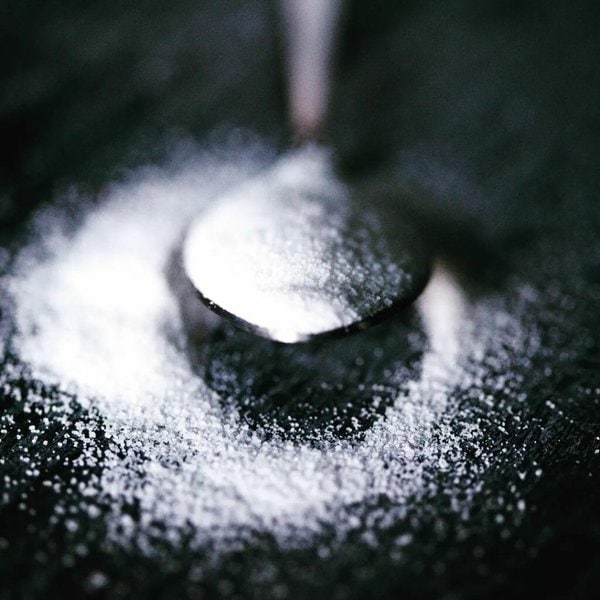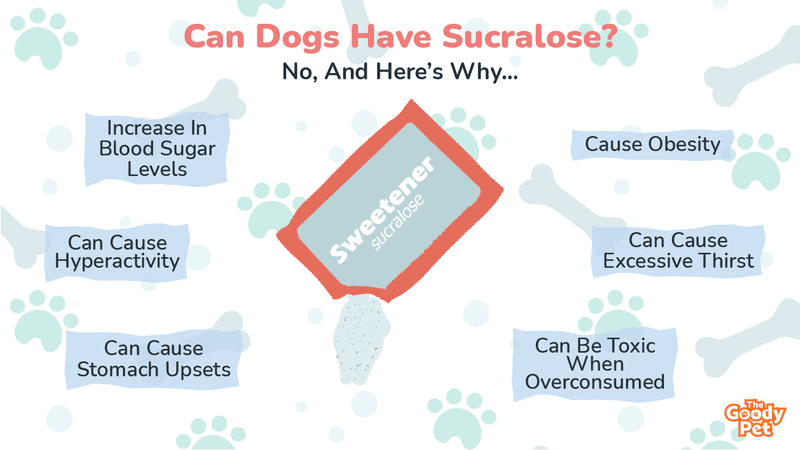Over the past few years, questions have been asked on whether or not artificial sweeteners are suitable for canine consumption. And one of these sweeteners that have generated widespread debate about its suitability for dogs is sucralose. So, can dogs have sucralose?
No, sucralose isn’t recommended for canine consumption. Sucralose is generally safe, but overconsumption of this artificial sweetener can trigger gastrointestinal upset and an abnormal rise in a pooch’s blood sugar level. Humans can consume sweet substances daily, but given the structure of a dog’s body system, our canine buddies don’t have the same luxury.
The dangers of dogs consuming artificial sweeteners such as sucralose are well documented, and for emphasis, we’ll be discussing some of the side effects of pooches eating significant amounts of sucralose in this article.
It’s not all doom and gloom, though, and if you find out that your Fido has mistakenly eaten that cookie containing sucralose, this article will also guide you on how to proceed. Before we go into all this, however, let’s have a look at what makes sucralose dangerous for dogs to consume.
Can Dogs Have Sucralose?

No, dogs shouldn’t have sucralose, as this substance can be extremely toxic to pooches when consumed in large quantities.
Sucralose, commonly sold under the brand name ‘Splenda,’ is a low-calorie, artificial sweetener that is typically extracted and synthesized from regular table sugar.
Sucralose is generally used as a sugar substitute in cooking and baking, and this artificial sweetener is also employed in the preparation of thousands of food products around the world.
The idea behind the addition of sucralose to food substances is simple – the reduction of the consumer’s sugar intake while still providing the satisfaction gained from the consumption of sweet, sugary substances.
It has to be said that sucralose’s calorie content – at 3.36 calories per gram – isn’t as high as that of regular sugar – 4 calories per gram.
But as typical with artificial sweeteners, sucralose is extremely sweet, and it is reported that this substance is about 600 times sweeter than regular table sugar!
Consequently, only little amounts of sucralose are needed to match the sweetness produced by sugar in food products.
That said, consumption of Sucralose in large quantities can result in a myriad of problems for your canine buddy, which is why we recommend the complete elimination of this sweetener from your beloved pooch’s diet.
What Are The Dangers Of Feeding My Dog With Sucralose?

Consumption of significant amounts of sucralose can result in a dog developing stomach upsets, as well as a dangerous spike in the pooch’s blood sugar level.
Technically, sucralose isn’t toxic to dogs, especially when consumed in minute amounts, but this isn’t in any way a green light for you to incorporate this artificial sweetener into your Fido’s diet.
Allowing your pooch to consume significant amounts of sucralose can result in the development of side effects, some of which include:
Gastrointestinal Upset
One of the major dangers associated with a dog consuming large amounts of food products containing sucralose is a disturbance within such a pooch’s insides, with the most common case being diarrhea.
The canine digestive tract is home to a lot of beneficial bacteria, which play a key task in ensuring that the pooch’s immune and digestive systems continue to work as they should.
Consequently, studies carried out on the impact of sucralose within the digestive system have shown that this artificial sweetener is capable of reducing the good bacteria located within a pooch’s guts by 50%!
And the consequence of this is the development of side effects associated with digestive issues such as vomiting and diarrhea.
Increase In Blood Sugar Levels
Apart from causing stomach upsets in dogs, studies have also revealed that the consumption of significant amounts of sucralose can result in a drastic increase in a pooch’s blood glucose levels while simultaneously decreasing insulin sensitivity.
The side effects of high blood sugar levels, also known as hyperglycemia, vary from dog to dog, but some of the more commonly observed symptoms include:
- Obesity
- Hyperactivity
- Excessive thirst
- Failure of wounds to heal
- Excessive gain or loss of weight
- Urinary tract infections
Production Of Chloropropanols
Sucralose typically breaks down under heat, especially when used in cooking food, to form chloropropanols, which are chemicals formed when glycerol reacts with chlorine under acidic conditions.
That said, these chloropropanols are not only toxic to dogs when ingested, but they also have the potential to facilitate the growth of cancerous cells within a pooch’s body.
What Should I Do If My Dog Eats Sucralose?
Immediately you notice that your pooch has consumed sucralose, closely observe such a dog for a few hours, and call your vet to schedule an emergency medical appointment if you notice any symptoms of ill health.

Observe The Pooch
Suppose you discover that your Fido has eaten food products containing sucralose but are unsure about the exact amount that the pooch has consumed. In that case, it is recommended that you place the dog under observation for at least a couple of hours.
That said, if you’re unsure of the exact sugar alternative that your canine buddy has consumed, you can always refer to the ingredients label of the food product in question.
When To Call Your Vet
If, during observation, you notice your canine buddy exhibiting symptoms such as diarrhea, lethargy, vomiting, and seizures, the next course of action is to get on the phone and explain these symptoms to your vet.
The severity of the symptoms being exhibited by your canine buddy will determine whether or not to book an emergency medical appointment with your vet.
While none of the symptoms associated with sucralose consumption are immediately life-threatening, they can cause great discomfort to a pooch. And in the absence of proper medical care, these symptoms can degenerate into something more serious for a dog.





